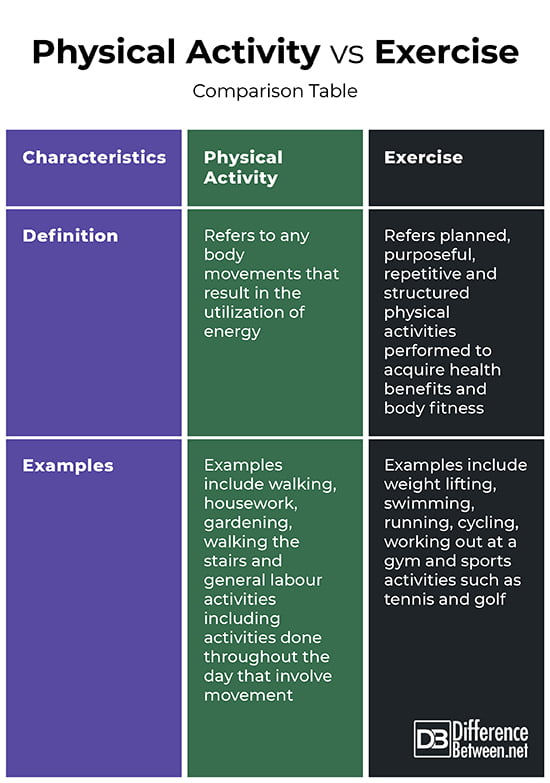If you’ve found yourself living a sedentary lifestyle, it’s time to make a change and start exercising! But where do you begin? Don’t worry, my friend, I’ve got you covered. In this article, we’ll explore the ins and outs of transitioning from a sedentary lifestyle to an active one. So grab your workout gear and get ready to embark on a journey towards better health and fitness!
Now, I know what you might be thinking: “How on earth can I start exercising when I’ve been sedentary for so long?” Well, fear not, because I’ve got some fantastic tips and tricks up my sleeve to help you ease into this new lifestyle. We’ll discuss everything from setting realistic goals and finding activities you enjoy to staying motivated and overcoming obstacles. So get ready to take the first step towards a more active and vibrant life!
- Set realistic goals: Start with small, achievable goals like taking a 10-minute walk every day.
- Create a routine: Schedule exercise into your daily routine to make it a habit.
- Choose activities you enjoy: Find activities that you genuinely enjoy to make exercising more fun.
- Start slow and gradually increase intensity: Begin with low-impact exercises and gradually increase intensity over time.
- Listen to your body: Pay attention to any discomfort or pain and adjust your exercise routine accordingly.
- Stay motivated: Find a workout buddy, track your progress, and reward yourself to stay motivated.

How To Start Exercising From a Sedentary Lifestyle?
Living a sedentary lifestyle can have negative effects on your overall health and well-being. Lack of physical activity can lead to weight gain, muscle weakness, and an increased risk of chronic diseases such as heart disease and diabetes. However, it’s never too late to start exercising and improve your fitness level. In this article, we will explore practical tips and strategies on how to get started with exercise, even if you have been living a sedentary lifestyle for a long time.
The Importance of Starting Slow
When you’re just starting to incorporate exercise into your sedentary lifestyle, it’s crucial to take things slow and gradually increase your activity level. Jumping into a rigorous workout routine right away can be overwhelming and increase the risk of injury. Start with low-impact activities such as walking or swimming, and gradually increase the intensity and duration as your fitness improves.
It’s also essential to listen to your body and not push yourself too hard. Pay attention to any pain or discomfort during exercise and take breaks when needed. Remember, the goal is to establish a consistent exercise routine that you enjoy and can maintain in the long run.
Creating a Realistic Exercise Plan
One of the keys to successfully incorporating exercise into a sedentary lifestyle is to create a realistic exercise plan that fits your schedule and preferences. Start by setting specific, achievable goals that align with your fitness level and personal interests. For example, if you enjoy being outdoors, you may set a goal to walk for 30 minutes three times a week.
It’s also helpful to schedule your workouts in advance and treat them as non-negotiable appointments. This will help you prioritize exercise and make it a regular part of your routine. Consider finding a workout buddy or joining a fitness class to stay motivated and hold yourself accountable.
Another important aspect of your exercise plan is to include a variety of activities to keep things interesting and prevent boredom. Incorporate cardiovascular exercises, strength training, and flexibility exercises into your routine. This will help you work different muscle groups and improve overall fitness.
Overcoming Barriers
Starting an exercise routine from a sedentary lifestyle can come with its fair share of challenges. It’s important to identify and overcome any barriers that may be preventing you from getting active. Here are some common barriers and strategies to overcome them:
Lack of Time
Many people cite lack of time as a major barrier to exercise. However, it’s possible to find time for physical activity even in a busy schedule. Look for opportunities to incorporate exercise throughout your day, such as taking the stairs instead of the elevator, walking or biking to work, or fitting in short bursts of activity during lunch breaks.
Lack of Motivation
Finding the motivation to exercise can be challenging, especially in the beginning. To stay motivated, remind yourself of the benefits of regular physical activity, such as increased energy, improved mood, and better overall health. Set small, achievable goals and reward yourself when you reach them. Find activities that you enjoy and make exercise a fun and enjoyable experience.
Fear of Judgment
Many people feel self-conscious when starting to exercise, especially if they are out of shape or have limited mobility. Remember that everyone has to start somewhere, and most people at the gym or in exercise classes are focused on their own workouts. If you feel uncomfortable exercising in public, consider working out at home with online workout videos or investing in home exercise equipment.
Benefits of Exercising
In addition to improving your physical health, starting an exercise routine from a sedentary lifestyle can have numerous benefits. Regular physical activity can help reduce stress, improve sleep quality, boost self-confidence, and enhance cognitive function. It can also help you maintain a healthy weight, reduce the risk of chronic diseases, and increase your overall quality of life.
Conclusion
In conclusion, starting to exercise from a sedentary lifestyle is a positive step towards improving your health and well-being. Remember to start slow, create a realistic exercise plan, and overcome any barriers that may come your way. Stay motivated, have fun, and enjoy the many benefits that regular physical activity can bring. So, why wait? Lace up your sneakers and get moving!
Key Takeaways
- Start slow and gradually increase your activity level to avoid injury.
- Find activities that you enjoy and make them a regular part of your routine.
- Set realistic goals and track your progress to stay motivated.
- Make exercise a social activity by joining a class or finding a workout buddy.
- Remember to listen to your body and take rest days when needed.
Frequently Asked Questions
1. How can I start exercising if I have a sedentary lifestyle?
Starting an exercise routine can be challenging if you have been leading a sedentary lifestyle. However, with the right approach and determination, you can make positive changes to improve your fitness. Here are some steps you can take to start exercising:
First, consult with your healthcare provider to ensure that it is safe for you to begin an exercise program. They can provide guidance based on your individual health needs. Once you have the green light, start by setting realistic goals. Begin with small, achievable targets and gradually increase the intensity and duration of your workouts. This will help you build endurance and prevent injuries.
Next, choose activities that you enjoy. Find exercises that you find enjoyable and that fit into your schedule. This could be anything from walking, swimming, cycling, or dancing. Consistency is key, so aim to exercise regularly, ideally at least 150 minutes per week. Remember to start slowly and listen to your body. If you experience pain or discomfort, adjust your routine accordingly.
2. How can I overcome the challenges of starting an exercise routine?
Starting an exercise routine can be challenging, especially if you have been sedentary for a long time. However, with the right mindset and strategies, you can overcome these challenges and make exercise a part of your daily life.
One common challenge is lack of motivation. To overcome this, find a workout buddy or join a group fitness class. Having someone to exercise with can provide accountability and make the experience more enjoyable. Additionally, set realistic and achievable goals to keep yourself motivated. Celebrate your progress along the way to stay motivated.
Another challenge is finding time to exercise. Look for opportunities to incorporate physical activity into your daily routine. This could mean taking the stairs instead of the elevator, parking farther away from your destination, or doing short bouts of exercise during your lunch break. Remember that every little bit counts, and even small amounts of exercise can have significant health benefits.
3. What are some tips for staying consistent with exercise?
Consistency is essential when it comes to exercise. Here are some tips to help you stay consistent:
First, schedule your workouts. Treat exercise like any other appointment and block out dedicated time for physical activity. This will help you prioritize exercise and make it a non-negotiable part of your day.
Second, find activities you enjoy. If you find exercise fun and enjoyable, you are more likely to stick with it. Try different types of workouts until you find something that you genuinely look forward to. Whether it’s dancing, hiking, or playing a sport, there are countless options to choose from.
Third, track your progress. Keep a record of your workouts and celebrate milestones along the way. Seeing how far you’ve come can provide a sense of accomplishment and motivate you to keep going.
4. How can I prevent injuries when starting an exercise routine?
When starting an exercise routine, it’s important to take steps to prevent injuries. Here are some tips to keep in mind:
First, warm up before each workout. A proper warm-up helps increase blood flow to your muscles and prepares them for the upcoming activity. Spend a few minutes doing dynamic stretches or light cardio exercises to get your body ready.
Second, listen to your body. It’s normal to feel some muscle soreness when starting a new exercise program, but if you experience sharp pain or discomfort, stop and rest. Pushing through pain can lead to further injury.
Third, gradually increase the intensity and duration of your workouts. Avoid pushing yourself too hard too soon. Give your body time to adapt and build strength. This will reduce the risk of overuse injuries.
5. How long does it take to see results from exercising?
The time it takes to see results from exercising can vary depending on various factors, such as your starting fitness level, the type of exercise you’re doing, and your overall lifestyle. Generally, you can expect to start noticing some positive changes within a few weeks.
Initially, you may experience improvements in your energy levels, mood, and sleep quality. As you continue to exercise consistently, you’ll start noticing changes in your body composition, such as increased muscle tone and decreased body fat.
Keep in mind that everyone’s journey is unique, and it’s important to focus on the overall benefits of exercise rather than solely on physical changes. Enjoy the process, stay committed, and embrace the positive impact exercise can have on your overall well-being.

Exercise not enough to undo harms of sedentary lifestyle, study shows
Final Thoughts
So, there you have it! Starting to exercise from a sedentary lifestyle may seem like a daunting task, but with the right mindset and approach, it is definitely achievable. Remember, the key is to start small and gradually build up your fitness level. Don’t be too hard on yourself if you stumble along the way – just keep pushing forward and stay consistent. Your body and mind will thank you for it!
Incorporating physical activity into your daily routine has numerous benefits, both physically and mentally. Not only will you improve your overall fitness and strength, but you’ll also experience increased energy levels, improved mood, and reduced stress. So, take that first step, whether it’s a short walk or a gentle yoga session, and watch as your sedentary lifestyle transforms into an active and vibrant one.
Remember, it’s all about finding activities you enjoy and making exercise a regular part of your life. Stay motivated, stay positive, and before you know it, you’ll be reaping the rewards of a more active and healthier lifestyle. Your journey starts now, so lace up those sneakers, grab a workout buddy if you need some extra motivation, and let the transformation begin!





